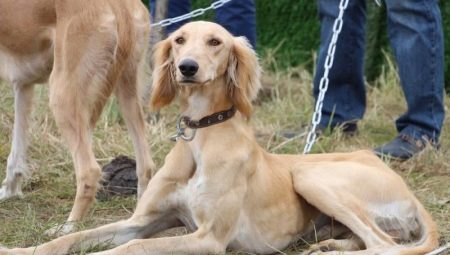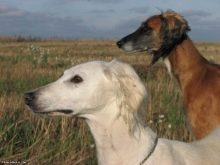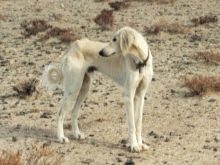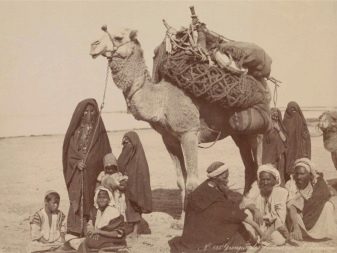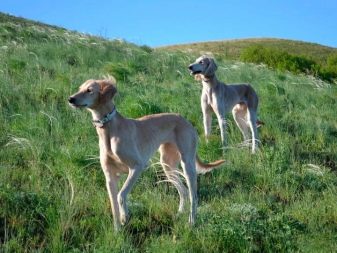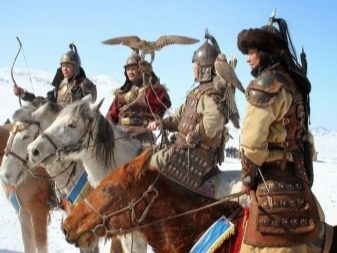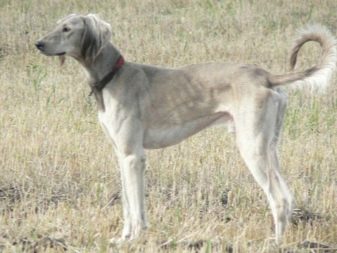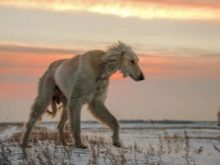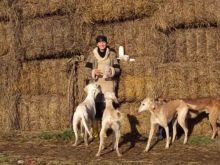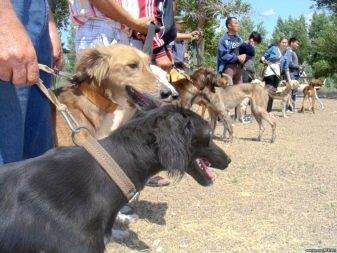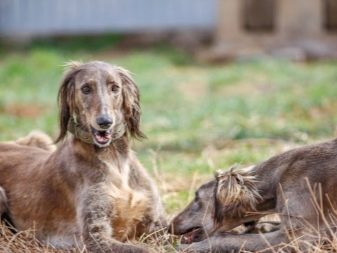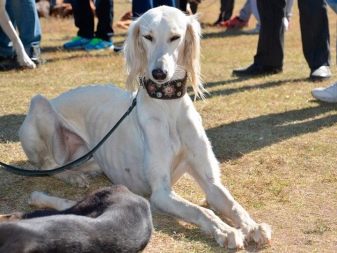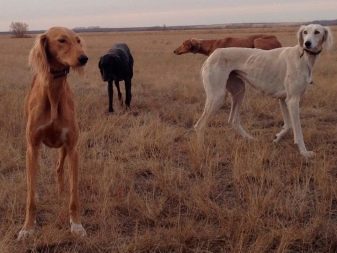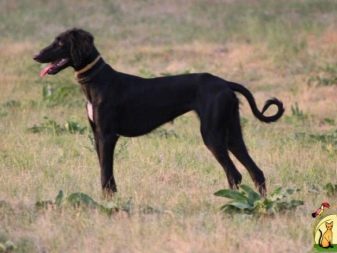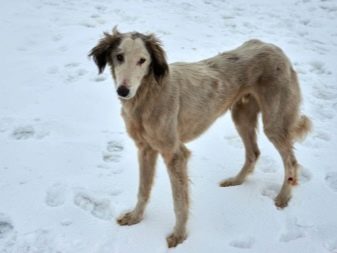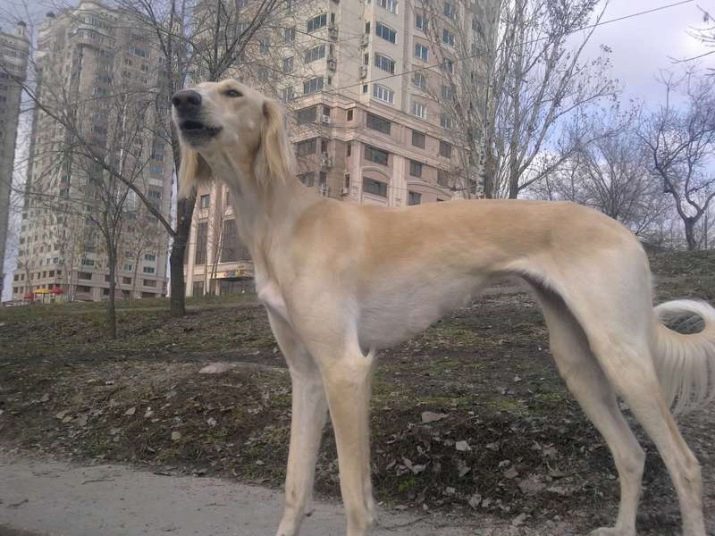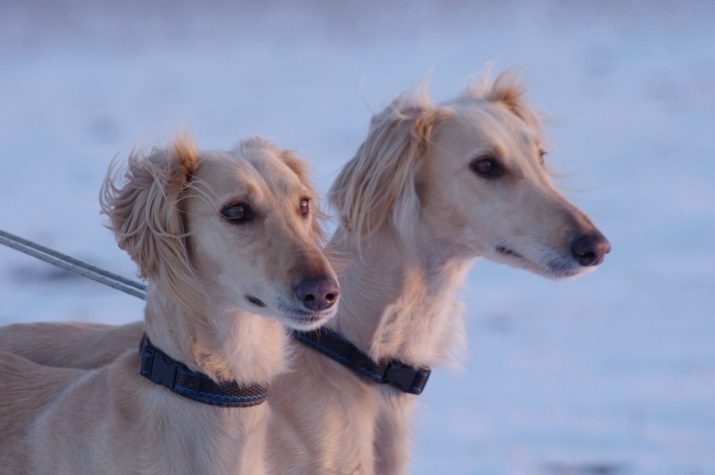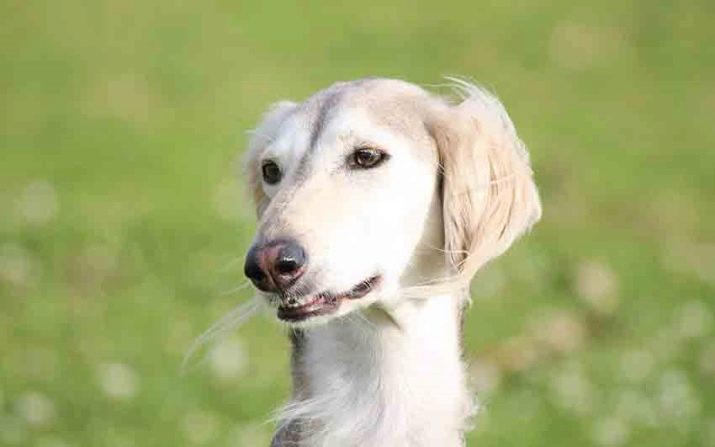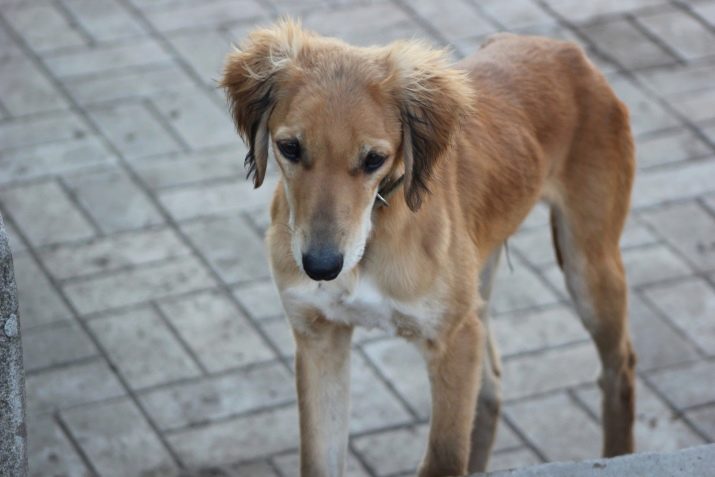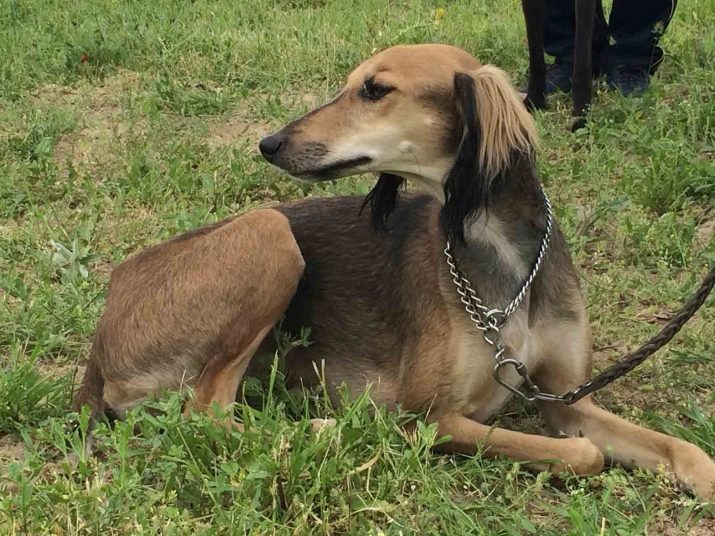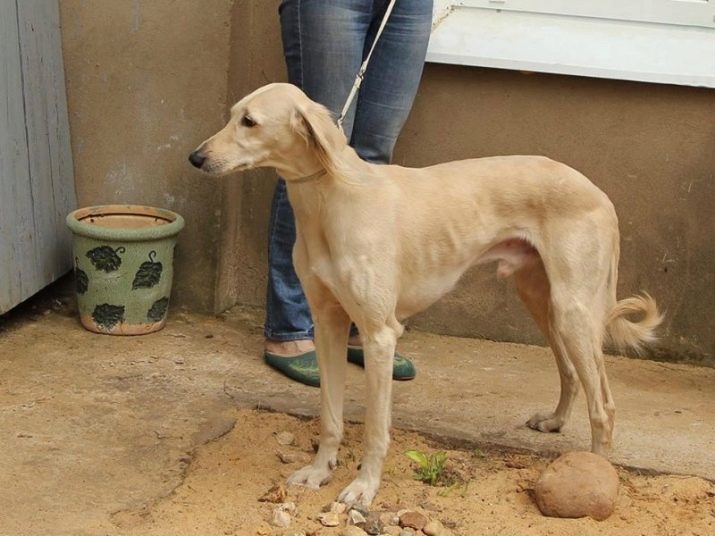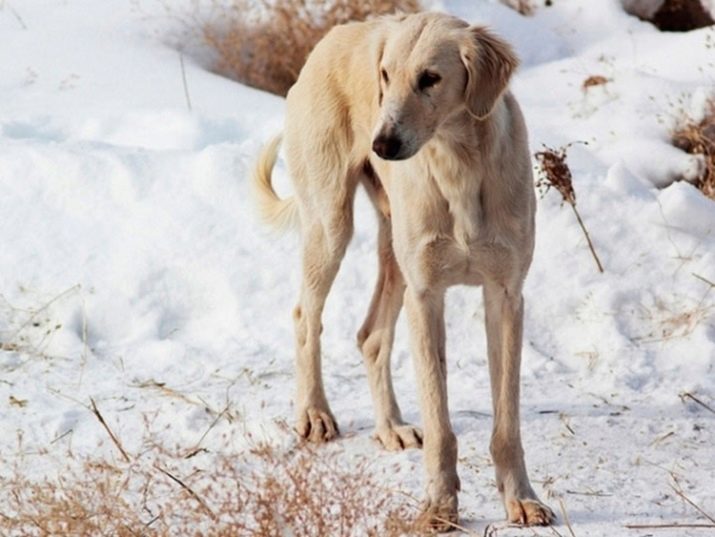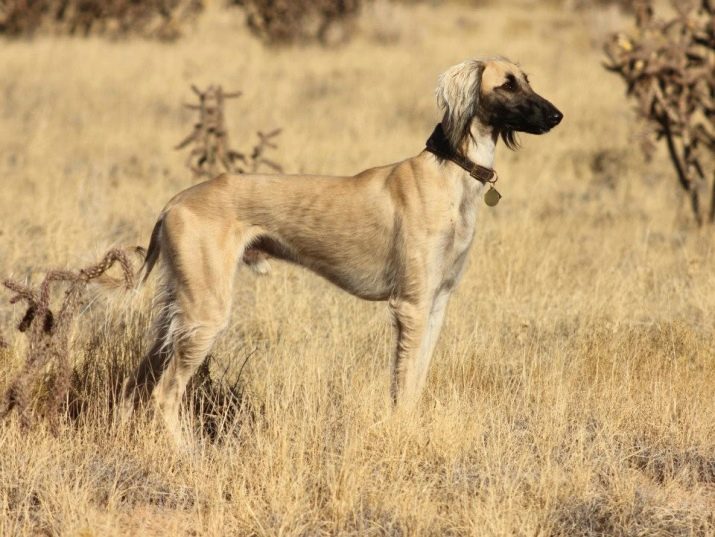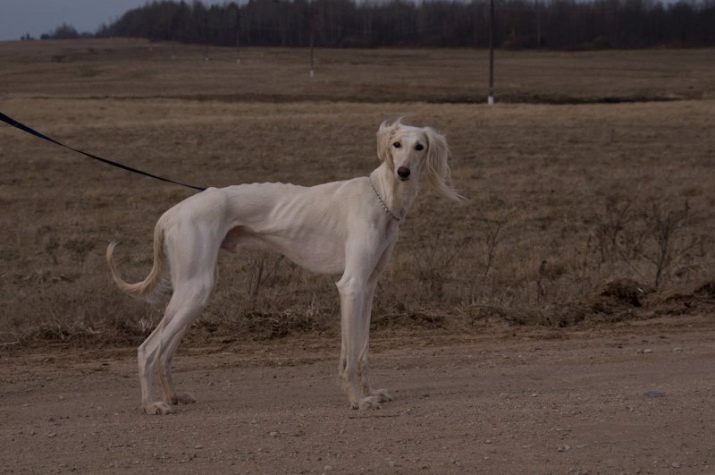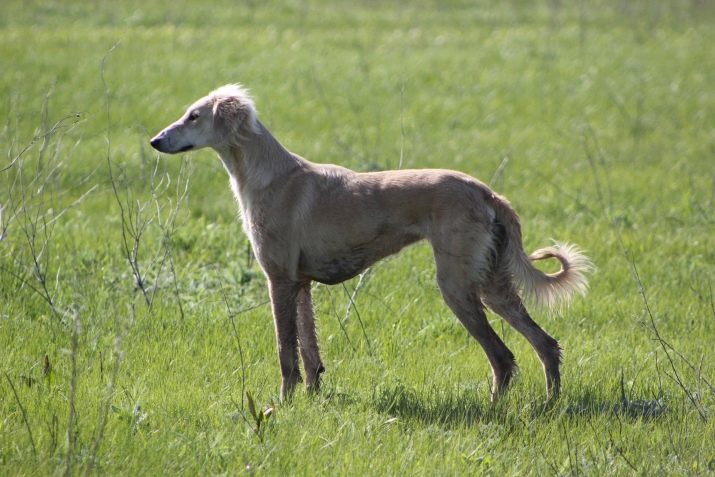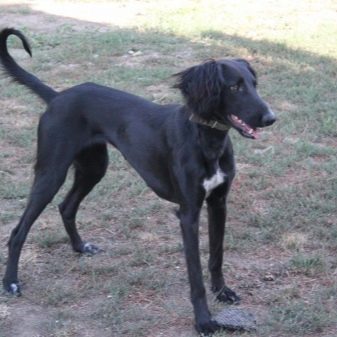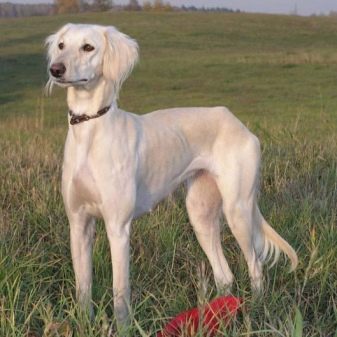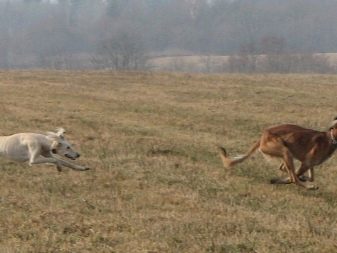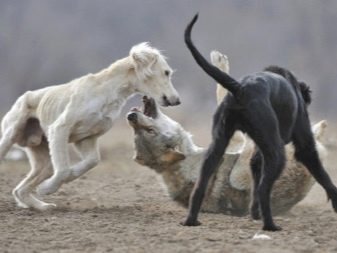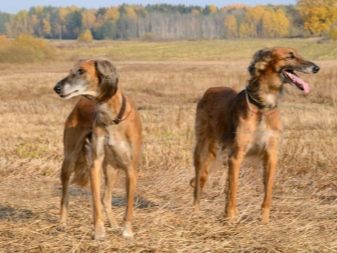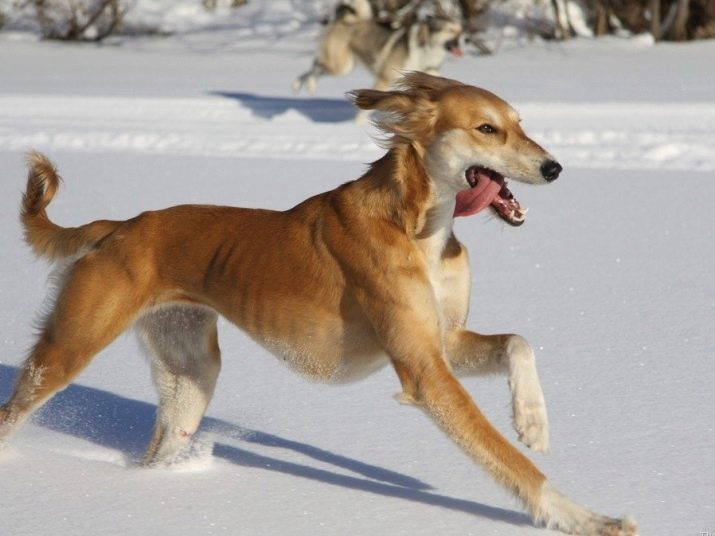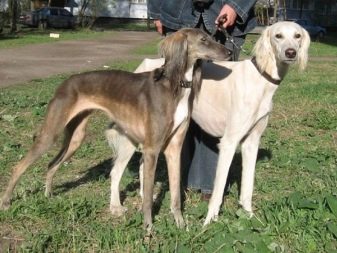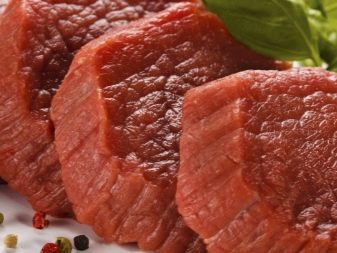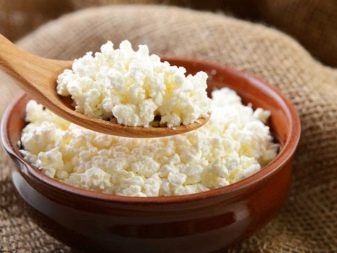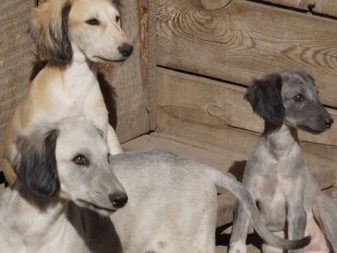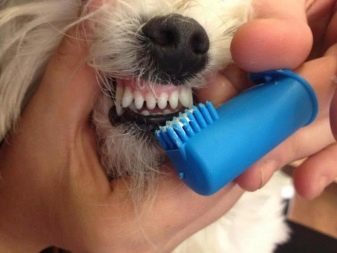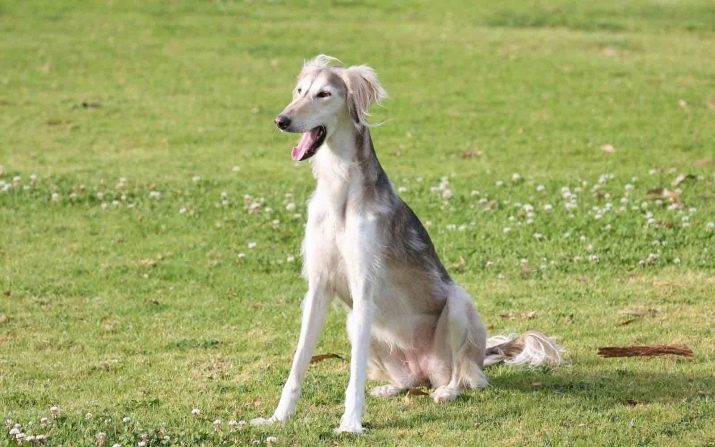Tazy is a unique and very small breed of dogs, known in hunting circles as the Central Asian or Turkmen greyhound. In their homeland in Turkmenistan, the breed was built into a cult for several millennia, and its happy owners remembered their pet's pedigree by heart. Animals are quite frequent characters of Turkmen folklore and the only dogs that were included in the personal tent of the owner.
History of origin
Tazy - one of the oldest breeds, belonging to the eastern group of greyhounds. Specialists have repeatedly drawn attention to her close relationship with the Arabian Saluki and some other eastern greyhounds: the Afghan luchak and the Russian steppe greyhound. The history of the appearance of the breed dates back to the eighth century and is associated with the invasion of Arab-Muslim warriors on the territory of modern Kazakhstan, Uzbekistan and Turkmenistan.
In the course of long wars, some territories of the Central Asian region became part of the Arab Caliphate and were settled by Arab soldiers and Bedouin tribes. The aliens did not come empty-handed to the Central Asian expanses: they brought property with them, drove cattle and brought their greyhounds hunting dogs - direct ancestors of modern Tazy. Over time, the natives learned to hunt with the help of a new breed and rather quickly appreciated and fell in love with these beautiful, proud dogs.
Then, with the beginning of the Tatar-Mongol invasion of the XII-XIII centuries, the greyhounds were brought to the regions north of Syrdarya and quickly spread throughout Central Asia from the steppes of Mongolia to the Crimea itself. This is due to the fact that after the conquest of Khorezm and the destruction of the Baghdad Caliphate, the Tatar-Mongols appreciated the breed they saw and began to take its representatives to their native places. This led to the fact that On the territories of Central and Central Asia, 2 species of steppe greyhounds were formed - Turkmen and Kazakh Tazy.
Some experts tend to allocate a separate group. Uzbek greyhoundshowever, in reality, the group is very heterogeneous and includes, rather, not a separate species of breed, but transitional types and local varieties of the two main groups. The formation of Tazy was greatly influenced by the climatic conditions and the landscape, due to which it was possible to obtain The unique breed, whose members tolerated the hot steppe climate, felt great in the absence of moisture and did not pay attention to the hot sand.
The new breed very quickly gained honor and won the respect of a person, as a result, it occupied a special position in society. So, the animals that grew up in a dry desert were kept clean and received the most worthy individual care.
The dogs were holily and cherished, they were provided with the best place in the home and feeding from the master's table, and the pet often got the best piece. Mistresses sewed soft mattresses and pillows for them, and in order for the animal not to suffer from cold and heat, they were dressed in carefully sewn blankets decorated with ribbons and embroidered with beads.
During the hunt, in order not to expend the power of the dog, the owner put it on the horse along with him. For this, a special basket was installed behind the saddle, in which the pots sat majestically. In addition, the owners were very proud of their pets and elevated them to the rank of family jewels.
This continued until the proclamation of the Soviet government and the entry of the Central Asian republics into the Soviet Union. So, by the beginning of the 30s of the last century, the number of Tazy livestock in these regions had declined significantly, and in some places the dogs had completely disappeared. However, concerned admirers of the age-old national traditions did not let the breed disappear, taking immediate measures to its rapid recovery.
By the labor of these people, by 1938, the number of Tazy in Kazakhstan alone approached 7 thousand individuals. However, the breed could not return past glory and honor. This is primarily due to the departure to the past of the classical model of hunting with the use of horses and dogs.
People began to poach more, using motorcycles and cars and blinding frightened animals with a bright searchlight beam. Therefore, over time, the need for greyhounds disappeared, and the pots practically ceased to be used for their intended purpose. In this regard, most of the Kazakh pure lines of the breed were lost, due to the greater secularity of the society formed in the republic.
In a more conservative Turkmenistan, migrants with the European way of life were much less, and therefore managed to preserve most of the national traditions and relics. They included the Turkmen hound, which retained the purity of blood and did not lose the high working qualities of an unsurpassed hunter.
In connection with the rapid development of urbanization in the Central Asian republics, Taz "came" to the city. The dog began to grow as a pet and show at exhibitions. The debut of the Kazakh and Turkmen lines of the Tazy was held in 1958 at the I All-Union Exhibition, which was held in the capital. Service and hunting dogs took part in the event, among which 12 Kazakh and 2 Turkmen greyhounds were present.
However, for the sake of justice, it is worth noting that the debut was made only for the Kazakh Tazy. The Turkmen line has already participated in the exhibition “Moscow Hunter”, held in 1927 in Moscow, where the dogs received the first deserved award.
In 1959, the first All-Union standard of both breed lines, Kazakh and Turkmen, was compiled, which remained unchanged for a long time. In 1995, a new standard of the Uzbek-Kazakh Tazy was approved in the Russian Federation of hunting dog breeding.
In addition to the republics of Central Asia, borzoi pedigree kennels are located in the Baltic countries, Ukraine, Germany, Denmark and Finland. In Russia, breeders from St. Petersburg are breeding purebred Tazy.
However, the most serious obstacle to the development and popularization of the breed is its non-recognition of the ICF. This is due to the discrepancy between the current state of the breed and the conditions of the federation, as well as the late accession of Kazakhstan to cooperation with this organization.
Breed description
Due to the fact that at the moment the breed is not recognized by the International Canine Federation, the standardization of the livestock is carried out taking into account the last approved standard from 1995. According to this document Tazy are two types of lean build dogs. Individuals of the Kazakh type are taller than the Turkmen: males grow 60-70 cm, females 55-65 cm. In the Turkmen branch males grow to 55-65 cm, females - up to 53-60 cm. The weight of individuals, depending on gender and type of breed, ranges from 25 to 35 kg.
The description of the breed is as follows.
- Corps in both species elongated, with an index of the ratio of the length of the croup to the height at the withers - 100/103. Bitches in comparison with males are a bit more elongated, which is caused by the necessity of feeding several puppies at once. The musculature of the animals is rather dry, the bones are strong and very well developed.
Thanks to this physique dogs look pretty strong, but at the same time, not hard.
- Tazy skin It has a high elasticity and, without forming folds, tightly wraps the body.
- The head has a somewhat elongated shape, it is rather dry, looking like a wedge from above. The occipital region is moderate, and there is also a weak development of the sagittal ridge. Stop smooth, very weak.
- Expressive eyes are almond-shaped, and the color of the iris is always brown, completely independent of coat color. Look very confident and understanding.
- Tazy lips are rather thin, tight to the teeth.
- The teeth are present in the complete set, white and strong, closing in a scissor bite.
- Nose in most cases has black pigmentation, however, light shades have brown shades.
- The ears are covered with long and wavy hair, They have a thin structure and hang loosely, touching the corners of the lips with their ends. Most often they are planted on the eye line or slightly higher and rise above the head due to the elastic cartilage.
- The neck is set high has a rounded or slightly compressed form on the sides, somewhat lengthened. In some dogs, it bends slightly upwards.
- The chest is wide and round, down to the elbow joint.
- Back straight or with reclose. The loin is somewhat shortened, with well-marked relief muscles, often has a slight bulge. The croup is wide and moderately sloping, the stomach is picked up.
- The tail is thin, ends in a ring, lowered just below the body line and resembles a saber. While running an animal, he rises a little, but does not enter above the back line.
- The front legs are straight, with well-developed forearm musculature, parallel to each other. The pasterns have an elongated structure and are slightly inclined. The hind legs are wider than the front, and have long levers and shears located vertically.
- The coat is single-layered, with short, dense and very soft bristle hair. On ears there are burkas 6 cm long, on front and hind legs - feathering, on the tail - a beautiful fan-suspension.
- The color can be white and gray with light spots of the extremities and areas of the burners. And also black, dark gray and red shades with a speck in the tone of the main coat are allowed, and for black individuals - a white spot on the chest.
Describing the breed, it is impossible not to mention its achievements. So, despite its rarity and small number, the Tazy is listed in the Guinness Book of Records as the fastest dog capable of a speed of 68.8 km / h. Thanks to the high-speed run in the times of the nomadic Tazi, they independently caught up with the beast, killed it and brought it to the owner. However, with the advent of firearms such a need is no longer necessary.
Today, the breed is used mainly for hunting the hare, and in the old days the dog worked with the average horned beast, for example, with gazelles.
Character
Tazy is a calm and stately dog, which treats its owner with great warmth, but is absolutely indifferent to strangers. However, due to excessive autonomy, the dog will not follow the owner relentlessly, and imposingly sit down in his place and look down on what is happening.
Contemplating such a picture, it is very difficult to imagine that this proud and independent dog is an unsurpassed hunter, able to work not only in a flock with his brothers, but also in conjunction with birds of prey. Tazy gets on well with other dogsHowever, it is not recommended to keep very small breeds with him in the house: the hunting instinct can play a cruel joke, and a small pet runs the risk of being caught.
In addition, given the tendency of the Tazi to dominate, the pet may try to take the lead by walking with other dogs. Therefore, in order to avoid incidents, the puppy should be started as early as possible to train and socialize.
But it should also be noted that, unlike other hunting breeds that are not distinguished by high guard and guard qualities, the pots are an exception. Dogs do an excellent job as a guard and bodyguard.by not allowing intruders to even get close to their master.
Despite some arrogance and composure, the pots often behaves feline. The dog gladly basks at the owner's feet and bends over his whole body when he is petted. As for the attitude towards children, the Tazy do not show any aggression towards them, they behave quite friendly. However, if a dog from early childhood was not socialized and adapted to children, then leave it alone with a small child is not worth it.
This is a serious working breed with a very independent and distinctive character, so you should not use it as a nurse.
Lifespan
Despite the fact that the biological life span of the breed is 13–15 years, the old Tazi do not live to old age. In particular, this applies to urban dogs, taken into the family as companions. There are several reasons for the early deaths of pets.
Dogs of this breed pursue any moving target, because of which the pet can easily run away for a walk after an airplane flying in the sky. In addition, these dogs run at a very high speed, so it is often impossible to catch up with them and bring them to reason. This often leads to the death of the pots under the wheels of the car.
The second reason for early deaths is heart disease, which is often transmitted to the puppy from the parents. So, among the most common diseases in Tazy can be noted heart failure, congenital heart muscle defect, anemia and thrombocytopenia. As well as dogs are often exposed food allergies, dermatitis, pyoderma, alopecia and cancer, often lymphoma.
In addition, the pots in any case can not be walked immediately after eating: greyhounds tend to turn the intestines and can easily die.
Conditions for content
The best place to stay Tazy is the countryside, where the pet will be enough space for games and a quick long run. If the dog lives in the city, then the owner should take care in advance of the place for walks, where the pots will be able to rush for several hours a day and play with other animals.
Such dogs must travel several tens of kilometers a day, which is why they are the best companions for lovers of long hikes and bike rides. However, when traveling together, the dog must be kept on a leash. A pet that has flown in by a flew bird may jerk after it and get lost.
In general, the Tazy are ideal dogs for home keeping. For many centuries of living in the same tent with a man, they have learned not to scatter food, eat carefully and behave very well. In addition, Tazy cannot live on the street physically, since the pet's fur does not have an undercoat.
Given all the nuances of the content, before buying a puppy, you must soberly assess your capabilities, and if at least one of the points is in doubt, then it is better to think about buying some other breed.
What to feed?
You can feed the pots with both natural food and ready-made feeds. If it is decided to feed the dog with ordinary foods, then you need to remember that the food from the human table does not suit the pet. The basis of the dog's menu is lean meat, which is recommended to be given fresh, cut into pieces and sprinkled with boiling water. It should be at least 60% of the total portion of the portion, and the remaining 40% should fall on vegetables and cereals, flavored with a spoon of vegetable oil. Pet eggs should be given in boiled form and no more than twice a week.
And also the dog is given sea fish boiled and stoned, seasonal fruit, cottage cheese and low-fat sour cream. HIt is forbidden to feed Tazy with sweets, baking, salty, smoked and fried foods, as well as products with a high content of dyes and preservatives.
From 5 months of age, bone meal, fish oil, and a veterinarian-recommended vitamin and mineral complex are additionally offered to dogs.
If the dog will eat ready-made food, it is better to opt for premium formulationscontaining all necessary for the body of animal matter. Whatever the type of food for the dog, the dog must have free access to fresh drinking water.
How to care?
Caring for pots is quite simple and is not much different from caring for many other breeds. The dog needs to be carefully combed a couple of times a week, thus preventing stalling. During the period of molting, the number of combing increases, and if necessary, even up to two times a day.
It is necessary to bathe a pet no more than 4 times a year.using special dog shampoos. In case of small dirt, the wool is wiped with a wet cloth or treated with dry shampoo.
Teeth should be cleaned every 2 weeks with a toothpaste and a brush on the finger. Ears and eyes are inspected daily, if necessary, remove the discharge with a damp cloth. When a pus or unpleasant smell pet appears immediately show the vet.
Greyhounds are prone to otitis, therefore, the condition of the ears should be monitored especially carefully. And also you need to regularly cut the pet's claws using special scissors or a claw cutter.
Upbringing and training
Tazy are difficult to train dogs and are not suitable as the first pet. In view of the proud and self-sufficient nature of any coercion, they respond with protest. therefore It is necessary to handle dogs gently and at the same time very persistently. When raising the Tazy, it is worthwhile to have a lot of patience, as the dog is not in a hurry to carry out commands and will try to seize the initiative whenever possible.
The main thing is not to allow the dog to take the lead and show him who is the boss. Before the occupation of the Tazy, it is advisable to tire, otherwise the dog will rush and will not want to train. For this, you can apply apportirovanie. No less important is the socialization of the pet, because an enraged Tazy can be very dangerous for others.
But with an individual approach and proper upbringing, borzoi make true friends and excellent companions.
For more information about the features of the breed, see the following video.
